Last week, EPA issued a new Guidance on “Absence of an Ingredient” Claims Associated with Federal Insecticide, Fungicide, and Rodenticide Act (FIFRA)-Regulated Products which creates a pathway for adding certain “free from” claims to pesticide products. This guidance follows many discussions between EPA and industry on whether a “free from” claim is important information to allow consumers to make informed purchasing decisions based on consumer preference, or if it could mislead a consumer into believing this claim implies heightened safety compared to other products. This pathway for adding “free from” claims is an exciting development as it will allow registrants to resume making certain “absence of” claims, such as “bleach free”, “DEET free” or “phosphate free”.
In the below article, SRC Federal Regulatory Team Manager, Tony Herber, breaks down the guidance and pathways to adding these claims to pesticide product labels.
Discussion on “Absence of Ingredient” Claims
EPA’s previous stance on “free from” or “Absence of Ingredient” claims was that listing the absence of an active ingredient on the product label may be considered misbranding under 40 CFR 156.10(a)(5) False or misleading statements, which states that ingredient safety claims and comparative claims are considered false and misleading. Though historically, claims such as “bleach free” or “DEET free” had been accepted for certain pesticide labels, a 2021 EPA guidance document noted these claims possibly constituted misbranding. This change was due to the fear “the claims” could lead consumers to believe these products were “safer” and ignore other warnings on the product label.
Though bleach, DEET, and phosphate free claims have faced scrutiny over the past few years, EPA has continued to allow claims such as “fragrance-free” and “chlorofluorocarbon-free”, taking the stance that these claims are aligned with consumer preference rather than implied safety. Industry has worked with EPA and provided consumer data showing that certain active ingredients also align with user preference rather than implied safety. For example, some users may dislike or prefer the smell or whitening effect of bleach for certain uses, leading them to make purchasing decisions about the product that have nothing to do with product safety. EPA has accepted some of these arguments as reasoning to allow “absence of ingredient” claims in certain situations.
Making “Absence of an Ingredient” Claims
EPA will allow “absence of ingredients” on a case-by-case basis, as long as the claim is not found to be false or misleading and aligns with EPA’s Label Review Manual. Claims about the absence of an ingredient should not imply heightened safety or that a product is somehow outside of FIFRA standards.
“Free from” claims will also not be approved if there was no reason to believe the ingredient would be in the product to begin with, as this may imply that the ingredient exists in competing products. For example, while stating DEET free on a disinfectant is technically true, there would not be a reason to believe that DEET would be added to a disinfectant product to begin with and thus would not be allowed. EPA recommends registrants reference the Federal Trade Commission’s 2012 Guides for the Use of Environmental Marketing Claims (“Green Guides”) for further guidance on avoiding these kinds of unfair or deceptive claims.
- EPA will allow a “free from” claim that it does not find to be false or misleading but may require consumer data to justify why a “free from” claim is unrelated to human or environmental safety and to demonstrate why this information would help this user make a purchasing decision. EPA provides the example of a registrant submitting customer survey data showing that a user may prefer a product without a certain ingredient because they are concerned the ingredient would damage a surface or item cleaned with it, not that they believe it is safer to their health or the environment to use.
EPA has provided specific guidance on ingredients for which the agency has seen frequent submissions:
Bleach
- Generally Allowed Claims
- EPA will generally allow “bleach free” statements on surface disinfectants and sanitizers and laundry sanitizers without a qualifier.
- Claims will generally not be allowed for:
- Products that are not antimicrobial surface disinfectants, surface sanitizers, or laundry sanitizers.
- Products containing chlorinated chemistries since they contain bleach or bleaching agents such as hypochlorite, hypochlorous acid, and other common chlorinating compounds.
Phosphates
- Generally Allowed Claims
- Phosphate free claims will generally be allowed without a qualifier for antimicrobial laundry sanitizers where phosphates are not included as inert ingredients.
- EPA finds this information to be important support to EPA, state, and local initiatives to reduce nutrient pollution.
- Phosphate free claims will generally be allowed without a qualifier for antimicrobial laundry sanitizers where phosphates are not included as inert ingredients.
DEET
- Generally Allowed Claims
- DEET free claims will generally be allowed for EPA registered insect repellents that do not contain DEET. This allowance will require a qualifier such as “*Not a safety claim” to be displayed prominently on the label. This qualifier must be at least half of the font size of the claim and be placed adjacent to the claim on the label.
- EPA may also allow a more detailed statement to be placed elsewhere on the label in certain circumstances.
- DEET free claims will generally be allowed for EPA registered insect repellents that do not contain DEET. This allowance will require a qualifier such as “*Not a safety claim” to be displayed prominently on the label. This qualifier must be at least half of the font size of the claim and be placed adjacent to the claim on the label.
How to Add a Free From Claim Under This Guidance
- Label updates without supporting data
- Changes should be submitted via a notification if adding a “bleach free” claim that is generally allowed under the guidance.
- Other changes should be submitted via a non-coded PRIA amendment (formerly called a non-PRIA amendment)
- Label updates with supporting data
- Changes should be submitted via a PRIA Amendment
Minimum Risk Pesticides
Though minimum risk pesticides are not required to be registered with EPA, the agency has issued a reminder that these products are subject to FIFRA and therefore, this guidance applies for “free from” claims on these product types as well. Making a “free from” claim in accordance with guidance will not disqualify the product from being exempt from EPA registration.
The SRC team recommends reviewing the guidance in detail before submitting your label to add an “absence of ingredient” claim. Our team of experts is available to help you review your product to determine if it is eligible to add these claims to the label, if data may be needed to support the claim, and the best pathway to submit this change to EPA. Please contact your SRC consultant with any questions about “free from” claims.
________________

Tony Herber
Federal Regulatory Manager
Posted on: 02/09/24


